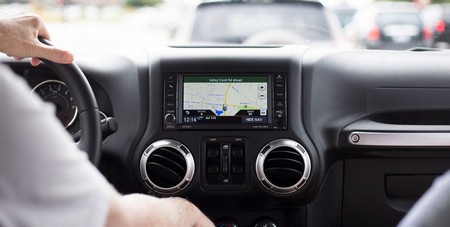Abschnitt 3.9 - 3.9 Road safety for field workers
Driving in traffic requires full concentration at all times. Safety systems fitted to vehicles can provide valuable assistance to your employees in this respect. All forms of distraction during use of a vehicle must be avoided. Even brief inattentiveness is frequently a cause of serious accidents.

 | Statutory references |
|---|---|
| |
 | Further information |
|---|---|
| |
 | Hazards |
|---|
The work of field workers is generally characterized by heterogeneous working conditions and by deadline pressure during journeys. Hazards and stresses may arise as a result of:
Distraction, communication, glare, obstructed visibility, and other road users
Falling and tripping
Pinch points on the vehicle
Improperly secured loads
Poor ergonomic posture
Stress situations in the coordination of appointments, particular customer requirements, contact with base
High pressure to perform
Illnesses caused by assignments abroad
 | Measures |
|---|
Your field employees carry out their work and take decisions highly autonomously. Determine the vehicles and equipment to be used, the transport of loads, the duration of journeys and the health aspects to be considered in advance.
 The main causes of traffic accidents are excessive speed, failure to observe priority, insufficient distance from other vehicles, and carelessness. The roads are a dangerous workplace: according to the DGUV, 62 % of all fatal occupational and commuting accidents occur in road traffic.
The main causes of traffic accidents are excessive speed, failure to observe priority, insufficient distance from other vehicles, and carelessness. The roads are a dangerous workplace: according to the DGUV, 62 % of all fatal occupational and commuting accidents occur in road traffic.
Check your employees' suitability for driving tasks and that their driving licences are valid. Ensure that they receive instruction in the use of the specific vehicles. Driving safety training courses can support safe driving behaviour. If necessary, arrange for preventive occupational medical care including vaccinations before employees are posted abroad.
The quality of field service work is enhanced by a constructive corporate culture that promotes stable relationships between employees and with customers. Ensure that your company's field operations are well organized and are conducted in compliance with the applicable regulations governing working hours.
This includes:
Stress and time management
Complaints management
Consideration for private life, work-life balance
Cooperation between colleagues
Inclusion in team meetings and further training measures
Stipulate the equipment of the vehicles, such as safety equipment, summer/winter tyres and ergonomic equipment. Provide suitable equipment for the securing of loads. Advanced driver assistance systems enhance safety and should be considered during the purchase of vehicles. Advanced driver assistance systems do not support users unless they are activated.
 Mobile equipment attached to the windscreen may obstruct visibility during driving. At a viewing distance of 15 m, even a comparatively small, typical satnav causes a blind spot of 2 m × 3 m. Mobile devices, whether satnavs, smartphones, tablet PCs or laptops, constitute loads and must be secured.
Mobile equipment attached to the windscreen may obstruct visibility during driving. At a viewing distance of 15 m, even a comparatively small, typical satnav causes a blind spot of 2 m × 3 m. Mobile devices, whether satnavs, smartphones, tablet PCs or laptops, constitute loads and must be secured.
Distractions of any kind during driving constitute a latent hazard. This is particularly relevant with regard to mobile information and communications technology. Instructions from satnavs, telephone calls and interaction with other multimedia applications are a source of distraction and may result for example in traffic situations not being properly judged or warning signals not being observed in time.
Ensure that your employees perform a vehicle check before setting off. This includes checking that all equipment, the seats and the mirrors are properly adjusted. Loose items should be stored in the luggage compartment, and any loads secured.
Preference should be given to the use of suitable mounts for devices with screens. The location of mobile devices must take account of the deployment area of airbags.
German law prohibits drivers from picking up or holding a mobile telephone in order to use it whilst the vehicle's engine is running.
Instruct your drivers:
To operate navigation device or telephones only whilst the vehicle is stationary
To keep the use of hands-free mobile telephone devices to a minimum, since any telephone call is by definition a distraction; telephone calls should preferably be conducted with the vehicle stationary and the engine switched off
Not to play loud music
To conduct emotional or complicated discussions before or after journeys
To ignore distractions caused by accidents or advertising
Where office tasks on tablet PCs or laptops are necessary, not to perform them in the vehicle, but at a table at a quiet location during a break
To break the journey in order to eat, smoke or look for items in the vehicle
To take regular breaks, and to perform complementary exercises during the breaks
To snack regularly between meals
